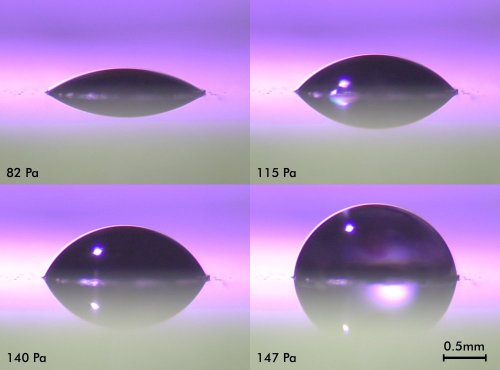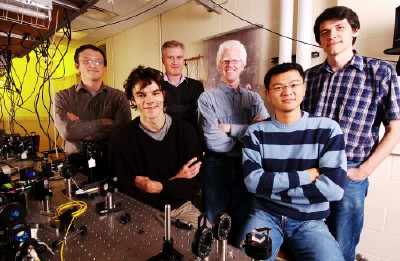Theorists claim dark energy does not exist
A new model of gravity explains the acceleration of the universe without dark energy
 Read article: Theorists claim dark energy does not exist
Read article: Theorists claim dark energy does not exist
Thank you for registering with Physics World
If you'd like to change your details at any time, please visit My account
Isabelle Dumé is a contributing editor to Physics World. She has more than 10 years of experience in science writing and editing in condensed-matter physics relating to technology/nanotechnology/biotechnology, astronomy and astrophysics, energy and the environment, biology and medicine. She has an MSc in advanced materials and a PhD in magnetism. In her spare time, she helps to organize cafés scientifiques.
A new model of gravity explains the acceleration of the universe without dark energy
 Read article: Theorists claim dark energy does not exist
Read article: Theorists claim dark energy does not exist
Physicists develop a variable-focus lens that would be ideal for mobile-phone cameras and other devices
 Read article: Fluid lenses feel the pressure
Read article: Fluid lenses feel the pressure
Theorists propose a concrete test for quantum gravity by measuring the properties of a dying star
 Read article: Quantum gravity for real
Read article: Quantum gravity for real
New evidence gives added support for a tenth planet in our solar system
 Read article: And then there were ten?
Read article: And then there were ten?
Physicists have remotely entangled two atomic qubits for the first time
 Read article: Light and atoms get entangled
Read article: Light and atoms get entangled
Tough composite ceramics can be built by mimicking the way seawater freezes
 Read article: Ceramics come out of the cold
Read article: Ceramics come out of the cold
Scientists discover a new type of lava channel on Mount Etna that was probably created by friction, not heat.
 Read article: Volcanoes reveal a new side
Read article: Volcanoes reveal a new side
Scientists have worked out how to maximise the length of a soccer throw-in
 Read article: How physics can improve your football
Read article: How physics can improve your football
Cars that automatically keep a fixed distance from the car in front could dramatically cut congestion
 Read article: Cruise control avoids jams
Read article: Cruise control avoids jams
 Read article: Matter bound by light
Read article: Matter bound by light